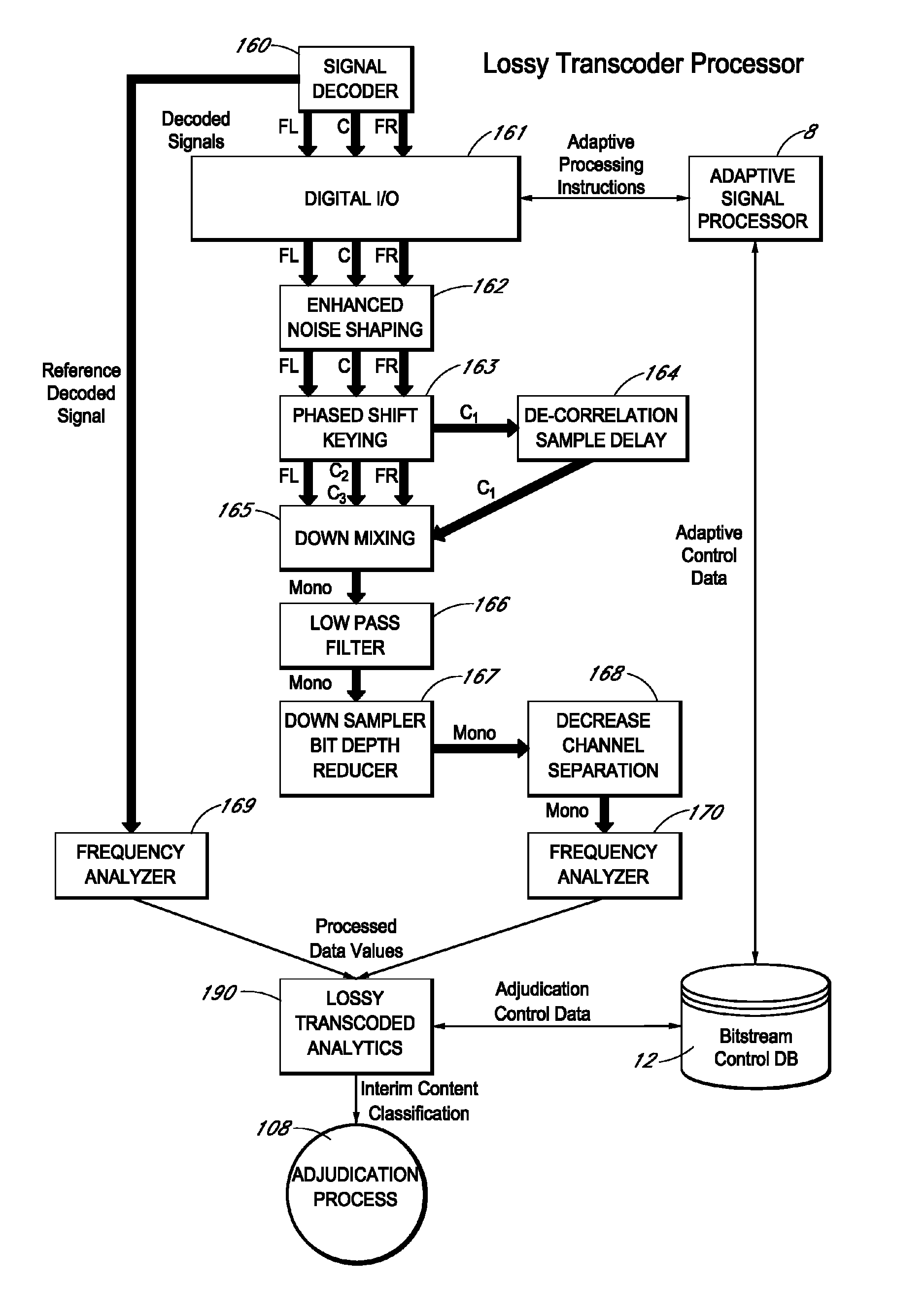Methods and systems for identifying content types
a content type and content technology, applied in the field of signal processing, can solve the problems of large reference signature database, inability to perform real-time, and inability to identify commercials based on signal content, and achieve the effects of enhancing artifacting, noise, and bit rate error, enhancing artifacting, and enhancing aliasing
- Summary
- Abstract
- Description
- Claims
- Application Information
AI Technical Summary
Benefits of technology
Problems solved by technology
Method used
Image
Examples
example content
[0717 Set Definitions
[0718]CS(SF)={0 . . . 57}
[0719]CS(UD)={58 . . . 59}
[0720]CS(LF)={60 . . . N)
[0721]Where
[0722]i=Temporal value
[0723]n=Temporal end of each IAD
[0724]D=Discern Content-type Function, may return one of the 3 values defined under T
[0725]CS=Content Set definitions for SF, LF and UD
[0726]A=Set of arithmetic mean values
[0727]T=Content identification for each TSD temporal period
[0728]SF=SF
[0729]LF=Long Form
[0730]UD=Undetermined
[0731]In a non-real-time environment (e.g., recorded content on a DVR) the Discern Content-type Function (DCF) may enable additional processing options, such as look-back, look-ahead, and probability analytics which may increase the accuracy of content element naming.
[0732](MESNA) ACP-Analytics
[0733]The algorithm for the MESNA analytics component, which may be referred to herein as MESNA-ACP, may use analytics of SNR ranges (MID and SIDE for both Peak and RMS) and the relationships between each of the SNRs in the determination of the interim conten...
example mid
[0754 and SIDE Differential Set 12 Definitions
[0755]Cmd1=SF{0 . . . 2},
[0756]LF{3 . . . 99}
[0757]Cmd2=SF{0 . . . 3},
[0758]LF{4 . . . 99}
[0759]Cmsd=SF{0 . . . 10}
[0760]UD{11 . . . 19}
[0761]LF{20 . . . 99}
[0762]Formula Definitions:
[0763]If Rs
[0764]T=D(Cmd1, Rmd)
[0765]else
[0766]T=D(Cmsd, Rmsd)
[0767]If T=UD then
[0768]T=D(Cmd2, Rmd)
[0769]Where
[0770]Cmd1=Content set definition 12 for the primary MID differential
[0771]Cmd2=Content set definition 12 for the secondary MID differential
[0772]Cmsd=Content set definition 12 for the MID / SIDE differential
[0773]B=Boundary dB value (−90 dB)
[0774]D=Discern Interim content classification function
[0775]T=Content identification for each TSD
[0776]SF=Short Form
[0777]LF=Long Form
[0778]UD=Undetermined
[0779]In a non-real-time environment (e.g., recorded content) the Discern Content-type Function (DCF) may enable additional processing options, such as look-back, look-ahead, and probability analytics which may increase the accuracy of content element na...
PUM
 Login to View More
Login to View More Abstract
Description
Claims
Application Information
 Login to View More
Login to View More - R&D
- Intellectual Property
- Life Sciences
- Materials
- Tech Scout
- Unparalleled Data Quality
- Higher Quality Content
- 60% Fewer Hallucinations
Browse by: Latest US Patents, China's latest patents, Technical Efficacy Thesaurus, Application Domain, Technology Topic, Popular Technical Reports.
© 2025 PatSnap. All rights reserved.Legal|Privacy policy|Modern Slavery Act Transparency Statement|Sitemap|About US| Contact US: help@patsnap.com



